Mexico City and the Pyramids at Teotihuacán
After talking about it for months, we finally got our act together and
scheduled a weekend trip to Mexico City in mid January. We had
always expressed disdain for the infamous smog and overpopulation of
Mexico City . . . but once we got there we had a great time!
The "DF", as it is known, is truly an amazing city with lots to
see and do. We only scratched the surface and we are already
planning our next trip.
We started our explorations at the central plaza or "Zocalo" on Friday
afternoon. Within a one (huge) block area are the enourmous
national palace, the cathedral, the aztec ruins of the Templo Mayor,
upon which the city was built, and a gazillion people selling their
wares and entertaining tourists on the huge plaza.


They have place some glass windows in the plaza outside the cathedral
where you can look down and see the ruins of Aztec pyramids beneath.
This spot has been an important seat of power for centuries.


Behind the Cathedral are the ruins of the Templo Mayor, right off the
zocalo in the center of Mexico City. You can see the bases of
pyramids where they have been excavating. We did little more than
glance at these structures (since we were going to Teotihuacan the next
day) but you can see lots of artifacts from this site at the National
Anthropology Museum.

We had some wonderful blue corn tortillas.

Mexico City has dozens and dozens of murals in the public buildings.
On this trip all we saw were the murals by Diego Rivera at
the national palace (but we went twice to look at those). The
huge murals depict scenes from the history of Mexico and we spent a
long time looking at all of the little details in the paintings and
finding places we had seen.

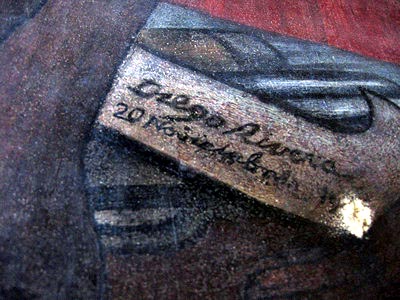


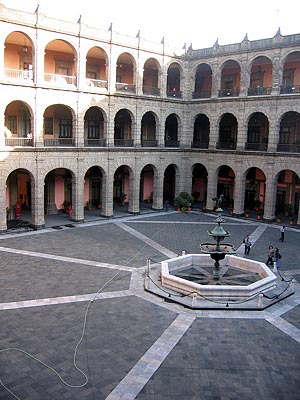
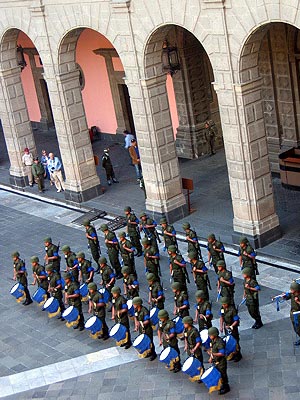
Garden behind the national palace.
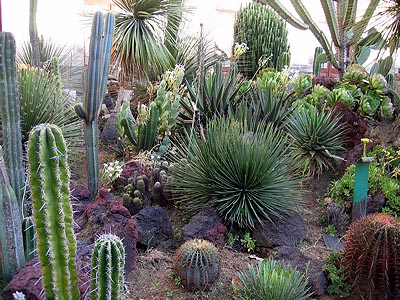
Our hotel was the Hotel Catedral, about 2 blocks from the zocalo.
It was very comfortable (and relatively inexpensive). There
was a nice observation deck on top of the building
were we could look out over the city, ringed by volcanoes. Friday
night was surprisingly smog-free and we could see the snow-capped peaks
of the volcanoes Iztaccihuatl and Popocaptel in the distance.

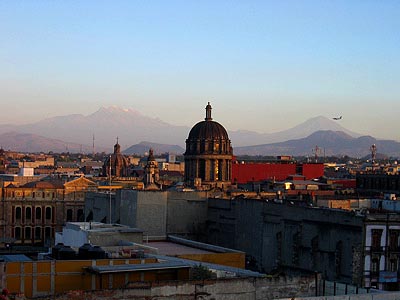
The view directly below wasn't quite as spectacular, however!



The Virgin of Guadalupe is one of the most venerated symbols of Mexico,
so we couldn't pass up the opportunity to see the original image. The
Basilica of Guadalupe is part of an enormous complex on the outskirts
of Mexico City, built on the site where the miracle was supposed to
have occurred. When we were there, there were tens of thousands
of people who had arrived as part of a pilgrimage. I guess that
is not very unusual, but it meant we didn't try to push our way into
the main church.
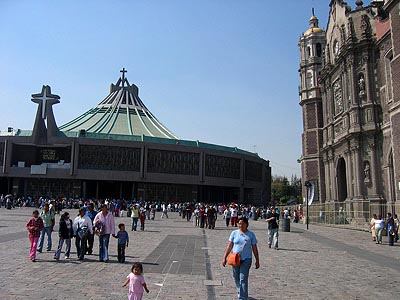
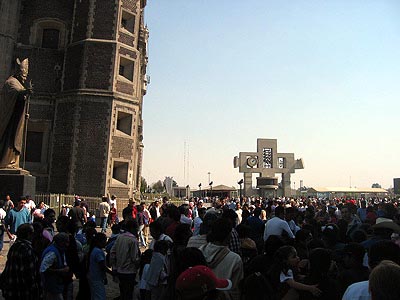
Here it is- the original
Virgen of Guadalupe. It doesn't look 500 years old! they
have 3 moving sidewalks that go beneath the painting, to keep people
moving.

One of the interesting tourist stops is the Plaza of Three Cultures: at
that one location you can see the ruins of an old pyramid, a spanish
colonial church, and modern skyscrapers, all juxtaposed beside each
other.
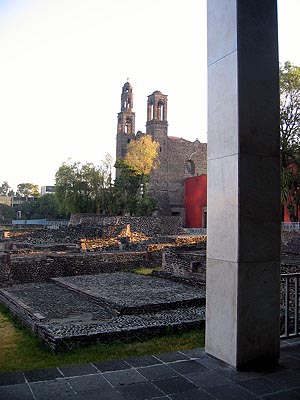
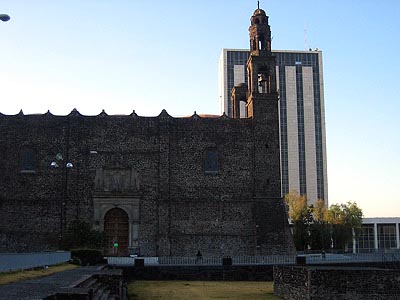

The Pyramids at Teotihuacán
We spent much of the day on Saturday visiting the large complex of pyramids at Teotihuacán.
First glimpse fo the pyramids, as we approached Teotihuacán.
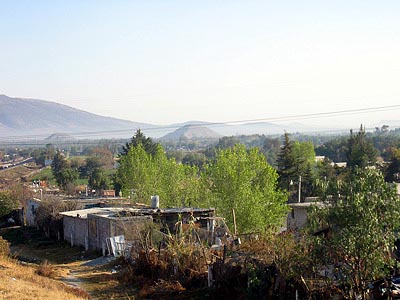
There are two main pyramids (the pyramid of the moon at the
northern end of the site and the larger pyramid of the sun in the
middle, as well as lots of other smaller pyramids and buildings to
explore.
The pyramid of the moon, and the view from the top.

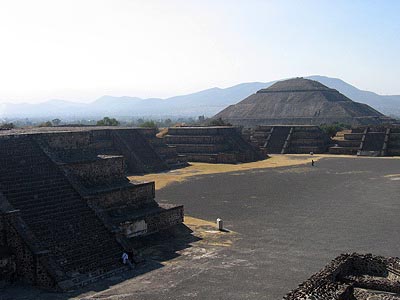
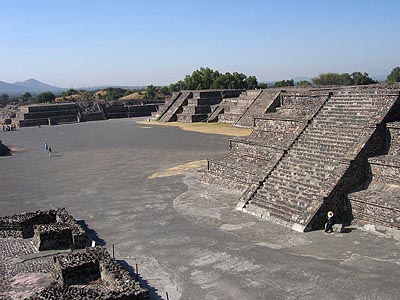

The steps were steeper than they looked from below!
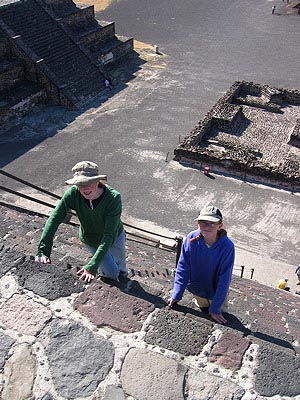

View from the top of the pyramid of the moon. The long central avenue
stretches about 2 km south from the pyramid of the moon. It is
hard to appreciate the scale of the place from these pictures.
Even though this pyramid was the smaller of the two main ones,
we enjoyed its view the best.


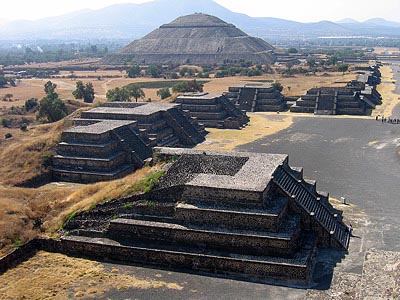


Here were are at the Pyramid of the Sun. It is
apparently the 3rd largest pyramid in the world, behind the great
pyramid at Giza, and another unrestored pyramid in Mexico, near the
town of Cholula.
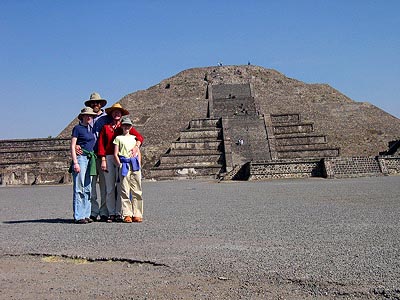


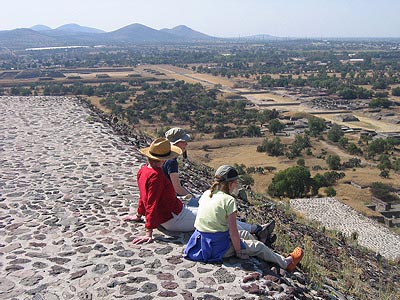
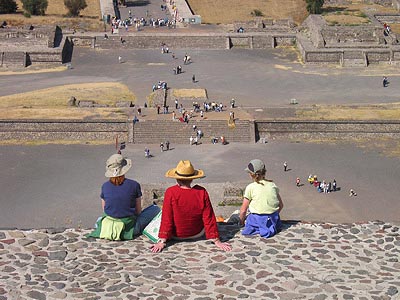
And of course a lot of the fun was just exploring the site and seeing
the little details. Here is one of the many places where you can
see how one layer of buildings was built right on top of a previous
layer. They excavations here were supposed to show seven distinct
layers of buildings (though I could only convice myself of about 3).

Here are a couple of the surviving paintings you can see.
Apparently, in their heyday, the pyramids would have been
entirely painted with bright red a blue decorations!

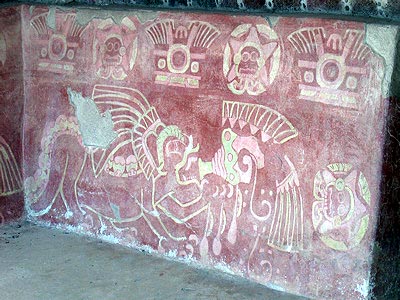
The small stones in the mortar signifiy which parts were rebuilt, so
you can distinguish the original stonework from the reconstructions.

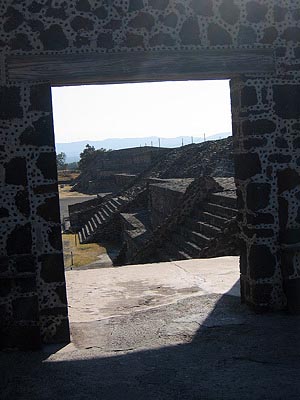
Museum of Anthropology
On Sunday we spent the day at the huge museum of anthropology.
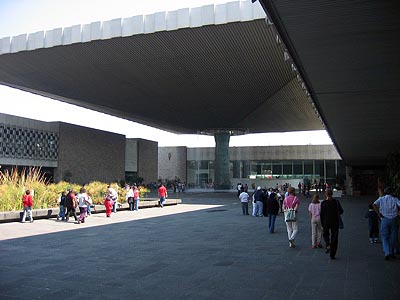
Here are some of the carvings recovered from the pyramids at
Teotihuacán, as well as a big stone altar that was excavated fom
the site of the Cathedral in the center of the city.
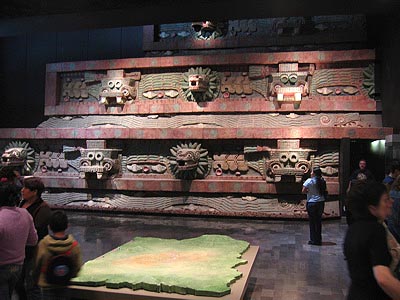

One of the most famous Aztec artifacts is this "calendar" that was also
found at the site of the main Cathedral. However the signs at the
museum say it is not a calendar at all (rather a tribute to the sun
god, I think).

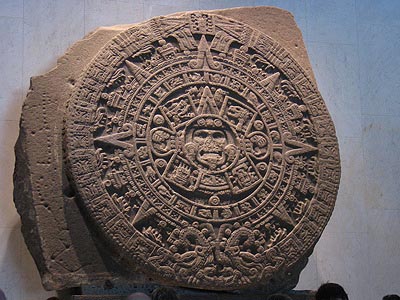
There are rooms devoted to each of the major civilizations in Mexico.
Here is one of the huge Olmec heads from the gulf coast near Veracruz,
dating from about 1000 BC, and another carving that was found at the
mayan ruins of Palenque.
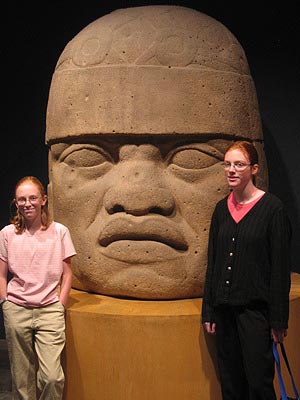


Upstairs, there are another dozen rooms devoted to each of the current indigenous cultures of Mexico:
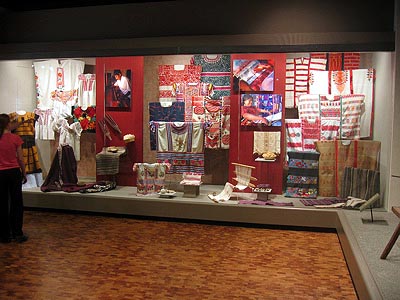

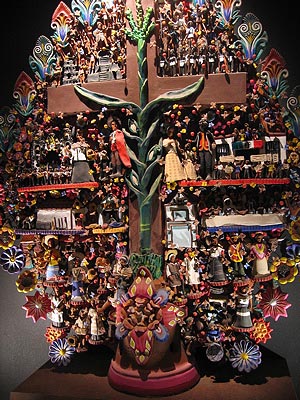


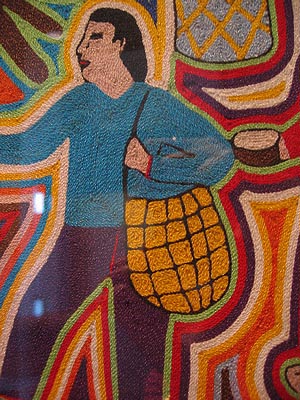

Our tour guide stopped at an artisans coop near the pyramids. At
first we weren't too excited because we wanted to get on to see the
pyramids. But it turned out to be pretty interesting. They
demonstrated how obsidian is carved in their shop. They also gave us a
history lesson about the many uses of the Maguey plant, which was
fascinating.

This inner skin is peeled off of the young shoots, which makes a kind
of paper. He also showed us how you could twist off the end
of the spine and pull out the long fibeers that can be used as
thread (pre-attached to the needle!).
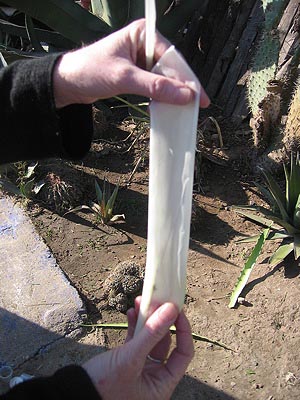
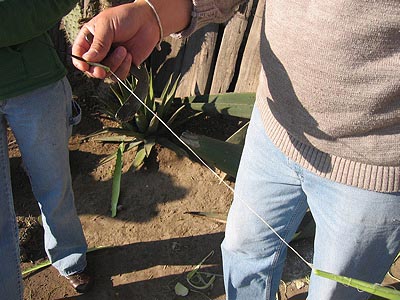
And of course the maguey is used for liquor: Here is the "agua
miel" that collects at the base of the leaves that is used for making
pulque and mezcal. We enjoyed some small samples of pulque,
mezcal, and tequilla-- even though it wasn't yet 9 AM.

































































